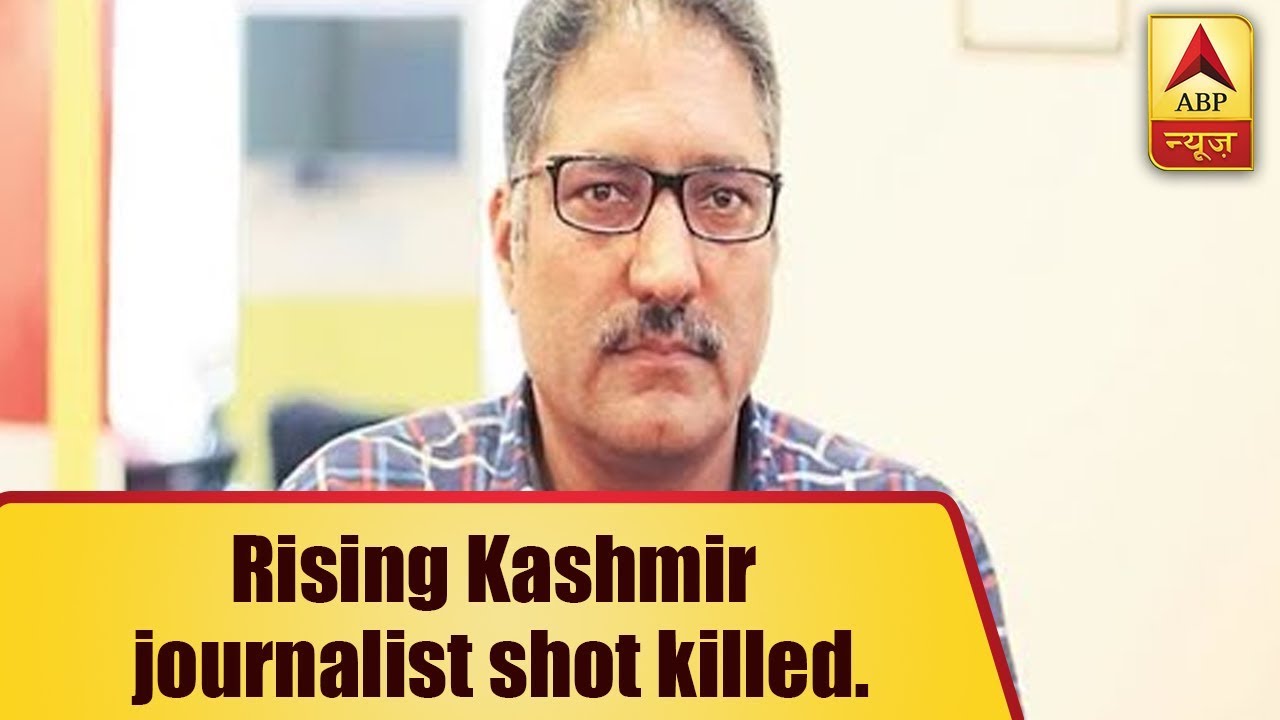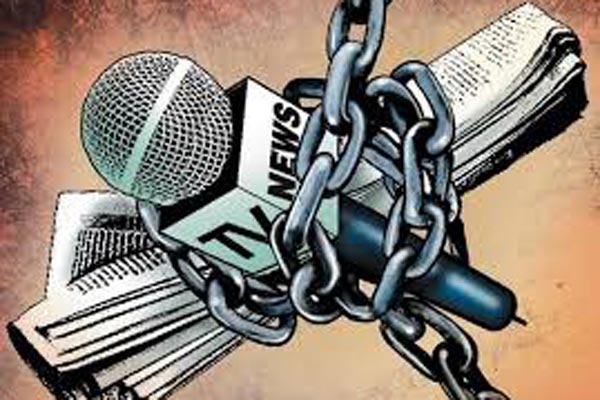Muting the watchdogs of Indian Democracy
The increasing threat to lives of journalists and several killings reported across the country have called for a cohesive media fraternity and civil society that can ensure better protection of journalists.

P
ress freedom is one of the founding pillars of Indian Democracy. The right guaranteed in Article 19 of the Indian Constitution has long been targeted and brought under the realm of dark politics. With the situation of journalist and Media houses getting vulnerable, the revered profession known to be vociferous has now been gagged by those in power.
With India’s rank staggering at 138 on the World Press Freedom Index, the largest Democracy now struggles to uphold its integrity. More than 200 cases of attacks on journalists have been reported in the sub-continent in the past four years. The fourth pillar of democracy, the watchdogs are at major risk. The highest numbers of attacks were reported from Uttar Pradesh, Bihar, Madhya Pradesh and Rajasthan.
The year 2014 reported the highest trends (in the last five years) of attacks on journalists and freelancers, especially in Uttar Pradesh. Despite the figures debasing eventually, journalists still remain under fire for their reporting. They are threatened, attacked, tortured and killed.
With only six months since 2018 began, four cases of journalist killings have already been reported. Press freedom in India has deteriorated in 2018 with the reports of killings in first six months of 2018 being nearly half of the whole of 2017. The year 2017 witnessed some of the most brutal killings of journalists with Gauri Lankesh being shot dead outside her residence, Santanu Bhowmik being killed during the protest ‘rasta roko’ in Tripura and then another journalist, Sudip Dutta Bhumik was shot in Tripura by a police officer during an altercation.
The indomitable spirits of the attackers are further intensified given the minimal instances of justice imparted to the attacked journalists. The trend of exemption to the assailant continues and so does risks on the lives of these watchdogs. This is a well-known fact with India ranking 13th in the World Impunity Index report, 2017.
The efforts to silence journalists and media houses are relentless. In the infamous Gauri Lankesh murder case, the journey leads from no judgment to slow judgment with the latest development being Parashuram Waghmare (one of the assailants) being arrested by the Special Investigation Team. Wagmare motivated by the current trend of saffron politics in the country regretted the heinous act that he committed. The case was a major breakthrough in the Indian Media fraternity, witnessing the entire community coming together to fight for the justice of the 55-year-old anti-Rightwing editor. It is cases like these which remind us about the perilous environment a journalist lives in. However, these collective voices were short-lived.
“Are deaths of journalists meant to be wake up calls for us to come together and fight for a more democratic democracy? Or is it only when a community comes together that the judiciary and the investigative branches meant to function?”
 The state of Tripura witnessed two attacks on journalists in 2017 in a span of two months. Both the journalists Sudip Dutta Bhumik and Santanu Bhowmik were made victims of what we know as power politics’ in India. While Santanu Bhowmik was attacked by the miscreants allegedly owing allegiance to Ingedinious Peoples Front of Tripura, Dutta was shot by a commandant, Nanda Reang of the Tripura Rifles over a war of words. Unlike the murder of Gauri Lankesh, these were lesser known ones. It seemed people had decided to “trivialise” the killings of these two brave journalists. Regional Editor of a leading daily publication tells Delhi Post,
The state of Tripura witnessed two attacks on journalists in 2017 in a span of two months. Both the journalists Sudip Dutta Bhumik and Santanu Bhowmik were made victims of what we know as power politics’ in India. While Santanu Bhowmik was attacked by the miscreants allegedly owing allegiance to Ingedinious Peoples Front of Tripura, Dutta was shot by a commandant, Nanda Reang of the Tripura Rifles over a war of words. Unlike the murder of Gauri Lankesh, these were lesser known ones. It seemed people had decided to “trivialise” the killings of these two brave journalists. Regional Editor of a leading daily publication tells Delhi Post,
“North East has also been a tough region for reporters. Very few people and members of the Media fraternity can understand what it is like to cover stories in this part of the sub-continent, in midst of separatist movements, tussles and the recent accelerated trend of mob lynching in the region. What saddened me the most was the way people and members of Media houses decided to treat the murder of both Sudip Dutta and Santanu Bhowmik. Even today very few people in the fraternity are aware of it. These two killings were simply witnessed as passing events. This is how we trivialised the murder of these journalists and this is why the threat on the community continues!”
“There were three other killings in Uttar Pradesh which failed to gather public attention. Naveen Gupta, Rajesh Sheoran and K.J Singh’s brutal killings failed to capture enough space in the minds of the fraternity and the audience.”
Sheoran, yet to receive justice and the police claiming to find no lead in the case seems to bother few. K.J Singh became a victim of youth out lash for slapping a jobless youth suspicious of malicious activity which cost the senior journalist his life. However, in this case unlike others, the accused was arrested expeditiously. The other two families of both Gupta and Rajesh Sheoran are still struggling for justice.
It is cases like these which make us question the fragility of the lives of these “truth speakers”. The assassination of these journalists is the ultimate form of censorship. Gagging them for propagating the truth and imparting transparent information usually cost these scribes their lives.
In March 2018, Sandeep Sharma, a 36-year-old brave-hearted journalist was killed immediately after his successful attempt to conduct a sting operation against a high-ranking police official who accepted a bribe of Rs 25,000 each month in exchange of allowing illegal mining activities in Madhya Pradesh.
Navin Nischal and Vijay Singh, two journalists of a Hindi Daily were mowed down by an SUV of the family members of the village headman. The young journalists were attacked in lieu of an argument that broke out between the two, and, the village headman. Sources revealed that the recent investigations of the journalists on the current trends of child marriage in the village and policies for land division agitated the bigwig.
Much recently, three-time survivor Shujaat Bukhari was shot dead in Srinagar. The killing of the veteran journalist ignited much anger among the people. The police alleged that the journalist was killed by Lashkar-e-Taiba militants.
India is increasingly becoming an intolerant country. A country whose citizens especially power holders are intolerant towards individualistic opinions and truth. It is instances like these which question whether we as citizens are too used to witnessing deaths of journalists that we have started to belittle these attacks and killings. Why is it that some cases bring the outrage of the public while others do not? Why is it that the civil society organisations, the media fraternity and the public fail to hold those who are accountable? And most importantly, why is it that the judiciary, the government, the lawmakers and enforcers not act towards the protection of these truth seekers?
“The lives of these watchdogs will continue to be risked if we do not come together and appeal for justice and laws that ensure their safety.”
A freelance journalist, Rahul Bhatnagar tells Delhi Post,
“In our country, it is difficult to find a free and independent space for journalists today. Every action is motivated by what might follow. The most vulnerable among these are the freelancers and the journalists associated with local dailies.”
He further adds, “What’s saddening is the inability of the Government to act against such killings. We live in a country where civil society organisations have had many success stories and I strongly believe, even in this case a pressure group or a civil society organisation can surely make a difference.”
